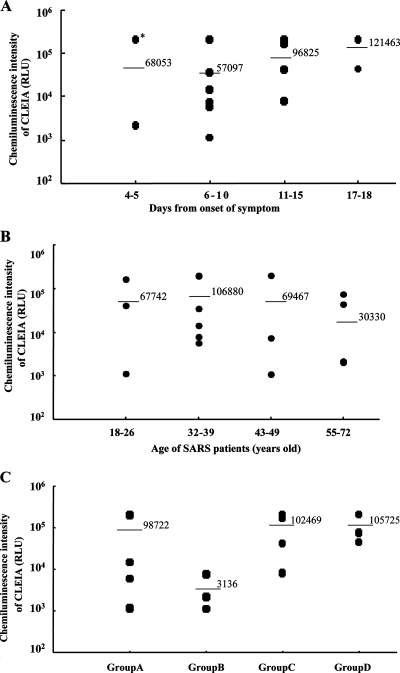FIG. 7.
N protein detection and the difference between the days from onset and age groups of SARS patients. (A) Chemiluminescence intensity of CLEIA with NPA from SARS patients who were classified into four groups by their days from the onset of symptoms (4 to 5, 6 to 10, 11 to 15, and 16 to 18 days). *, the CLEIA signal of patient P16 in the early stage (4 days from onset of symptoms) whose viral load is 2.43E + 07 copies/ml. (B) Chemiluminescence intensity of CLEIA with NPA from SARS patients who were classified into four groups by their ages (18 to 26, 32 to 39, 43 to 49, and 55 to 72 years). Chemiluminescence intensity (RLU) of the NPA from each SARS patient is expressed in its proper lane of panel A or B. Bars and numbers in each diagram indicate mean values of signals with specimens in each group. (C) Chemiluminescence intensity of CLEIA with NPA from SARS patients who were classified into four groups by a combination of their age and their days from the onset of symptoms. Group A, NPA from patients 18 to 39 years old and at 4 to 10 days from the onset of symptoms; group B, NPA from patients 44 to 57 years old and at 4 to 10 days from the onset of symptoms; group C, NPA from patients 24 to 35 years old and at 11 to 17 days from the onset of symptoms; group D, NPA from patients 43 to 71 years old and at 12 to 18 days from the onset of symptoms.

